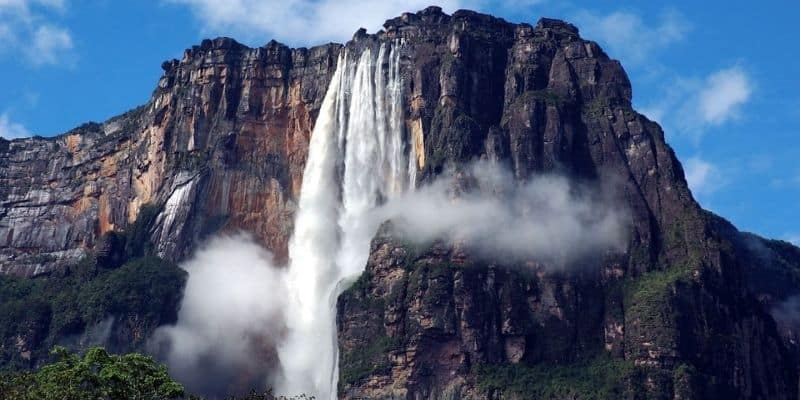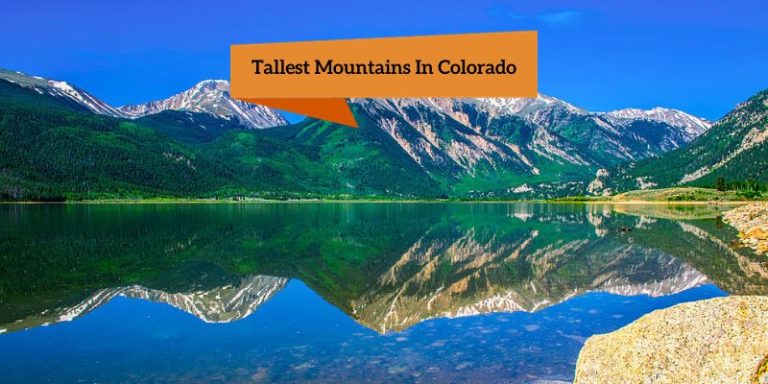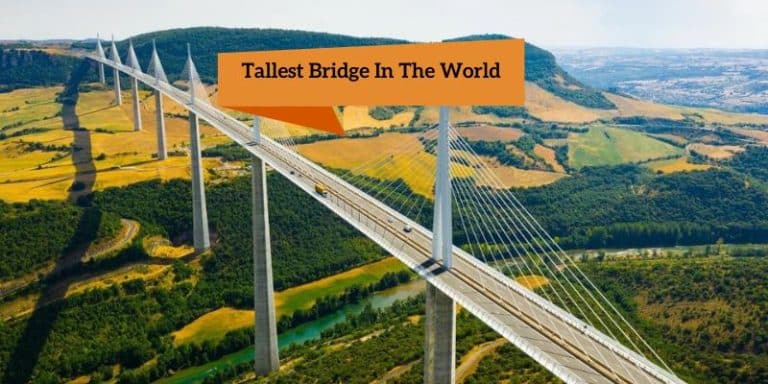Tallest Waterfall In The World: Angel Falls Height

Waterfalls are majestic natural formations that captivate our senses with their powerful flow and breathtaking beauty. They are a testament to the raw, unrelenting force of nature. Their sheer size and ferocity have made them a popular tourist attraction all around the world. In this article, we will discover into the world of waterfalls. We’ll focus on the tallest waterfall in the world, Angel Falls, and exploring other notable waterfalls across the globe.
What is a waterfall?
A waterfall is a stunning natural phenomenon that occurs when a river or stream flows over a vertical drop or a series of drops in its course. The resulting cascade of water creates a dramatic display as it plunges downwards. It often generating mist and spray, and sometimes creating a rainforest or oasis at its base.
There are several types of waterfalls, including plunge, cascade, and tiered falls, each with its unique characteristics and formation process. Waterfalls are formed when a river meets a drop in the Earth’s surface. The best example for it that a cliff or steep rock face, leading to the gravity-induced descent of the water in a visually striking spectacle.
Understanding the formation and classification of waterfalls adds to our appreciation of their awe-inspiring beauty and provides insight into the geological processes that shape the Earth’s landscapes.
Where is Angel Falls located?

Angel Falls, renowned as the highest waterfall in the world, is situated in the Canaima National Park in Venezuela. The geographical location of Angel Falls is within the lush, biodiverse expanse of the park. It adds to its appeal as a natural wonder and drawing innumerable visitors and explorers keen to witness its splendor.
Canaima National Park, a UNESCO World Heritage Site, is a sprawling wilderness of tropical rainforests, river plains, and tepuis (tabletop mountains) that form a remarkable backdrop to the awe-inspiring Angel Falls. The park’s diverse ecosystems and unique geological formations make it an essential destination for nature enthusiasts and adventure seekers.
Venezuela’s Angel Falls, also known as Salto Ángel. It is a breathtaking testament to the country’s natural beauty. It stands as a symbol of national pride and wonder, drawing global admiration for its sheer grandeur and majestic presence.
How tall is the Tallest Waterfall in the World?
Angel Falls is truly a natural marvel, with an astounding total height of 979 meters (3,212 feet). This staggering height makes it the undisputed tallest waterfall in the world, captivating all who behold its awe-inspiring descent. The sheer scale and uninterrupted flow of the falls are a sight to behold. Their prominence as the highest waterfall in the world contributes to their status as a must-see natural wonder.
The designation of Angel Falls as the tallest is a testament to the unparalleled natural beauty of Venezuela’s landscape. It is cementing the falls as an iconic symbol of the country’s natural heritage and a source of enduring wonder and fascination for travelers and explorers.
The cascade of Angel Falls in Venezuela is an undeniably powerful spectacle. It is captivating the imaginations of all who witness its mesmerizing plunge. It is creating an indelible impression of nature’s grandeur and the transcendent power of the elements.
Other notable waterfalls in the world
Aside from Angel Falls, there are several other notable waterfalls across the globe that captivate with its impressive scale. Tugela Falls in South Africa, Yosemite Falls in the United States, and the iconic Niagara Falls are just a few examples of natural wonders that continue to enchant and inspire visitors with their sheer magnitude and captivating allure.
Tugela Falls, with a height of 948 meters (3,110 feet), is one of the world’s highest waterfalls. It is offering a spectacular display of nature’s grandeur as the Tugela River plunges over the edge of the Drakensberg escarpment. Yosemite Falls, located in California’s Yosemite National Park, is a series of cascading waterfalls totaling 739 meters (2,425 feet). It is captivating visitors with its uninterrupted flow and awe-inspiring beauty.
Niagara Falls, positioned on the border between the United States and Canada. It is a world-renowned natural wonder, famed for its powerful cascade and mesmerizing presence. It draws millions of visitors each year to witness its incredible display of nature’s force and beauty.
What are the differences between natural and artificial waterfalls?
Natural waterfalls, such as Angel Falls and the aforementioned examples, are characterized by their unspoiled beauty and the raw, untamed force of nature on full display. These falls are created by geological processes over millennia, resulting in their unique and mesmerizing forms, and they hold deep cultural and ecological significance as landmarks of natural heritage.
In contrast, artificial waterfalls are human-made constructions, often found in urban landscapes and designed as decorative features. It is utilizing engineering techniques and man-made materials to mimic the appearance and flow of natural waterfalls. While they may offer their own beauty and appeal, they lack the primordial power and unadulterated grandeur of their natural counterparts.
The distinction between natural and artificial waterfalls lies in their origins, characteristics, and the impact they have on the surrounding environment. Comparing the two types provides an insight into the diverse ways in which water features are integrated into human landscapes, as well as the profound and enduring allure of natural wonders that have been shaped by the Earth’s geological processes.






